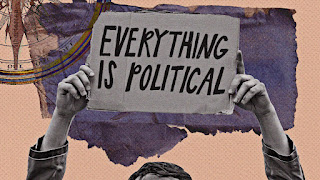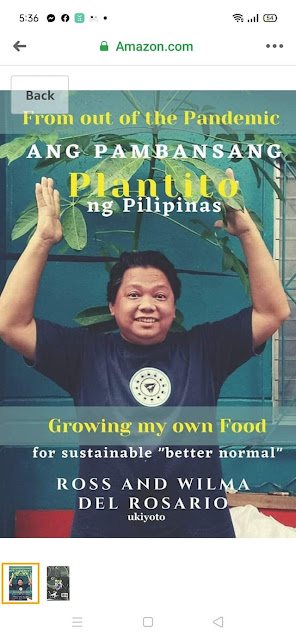Wazzup Pilipinas!?
Group urges Brigada Eskwela participants to heed 20 pollution prevention reminders
The EcoWaste Coalition, a non-governmental organization working for a zero waste and toxics-free society, enjoined all participating schools, groups and individuals to aim for an eco-friendly conduct of Brigada Eskwela, which will kick off on June 9.
An ecological Brigada Eskwela will help in preventing and reducing environmental pollution that may arise as schools are cleaned, repaired and renovated in time for the opening of academic year 2025-2026 on June 16, the group said.
“We enjoin our schools across the country to conduct this unique expression of the ‘Bayanihan’ spirit in the most eco-friendly manner possible to avoid garbage and pollution, which may pose health and environmental risks during and even after the Brigada Eskwela,” said Aileen Lucero, National Coordinator, EcoWaste Coalition.
To guide the participants, the EcoWaste Coalition has released a set of reminders, which, if observed, would contribute to 1) reduced generation of preventable trash such as single-use plastics and microplastics, 2) reduced releases of environmental toxins such as particulate matter and persistent organic pollutants (POPs) from open waste burning, 3) reduced exposure risks from products laden with hazardous chemicals such as lead paints and mercury fluorescent lamps; and 4) reduced emissions, as well as residual waste, from tobacco and nicotine products.
The group further emphasized that adherence to these reminders would be in sync with various policy issuances by the Department of Education (DepEd) such as Order No. 5-2014 on ecological solid waste management; Order No. 4-2017 on mandatory use of lead-safe paints; Memorandum No. 111-2019 prohibiting e-cigarettes and reiterating the ban on smoking; and Order No. 6-2021 on minimum standards and specifications for DepEd school buildings, among others.
A. On Plastic Use Reduction:
1. Refrain from bringing single-use plastics (SUPs) into the school, including water in plastic bottles, food in polystyrene foam containers, plastic cutlery, plastic bags and the like.
2. Bring your own water in a reusable container.
3. Choose cleaning aids like brooms and scrub brushes that are made of plant-based materials.
4. Avoid the use of polyvinyl chloride (PVC) plastic tarpaulins, which may contain cadmium, lead, phthalates and other hazardous chemical additives.
B. On Solid Waste Management:
5. Observe the proper segregation of discards at source to facilitate their recycling or composting, and to minimize the volume of garbage for disposal.
6. Never set trash on fire to prevent the formation of environmental pollutants such as fine particles, heavy metals and dioxins.
7. Compost biodegradable discards such as dry leaves and yard trimmings to produce natural fertilizer or soil enhancer for the school garden.
8. Spruce up the school’s Materials Recovery Facility (MRF), also known as Ecology Center, including the containers or segregators for properly-labeled recyclable and compostable discards, and special waste.
C. On Toxics Use and Exposure Avoidance:
9. Handle busted fluorescent lamps with care to prevent mercury spill; do not mix such lamps with ordinary trash, and properly store and dispose of them as hazardous waste. Go for mercury-free LED lights with a valid Import Commodity Clearance (ICC) sticker or Philippine Standard (PS) mark.
10. Select safer cleaning agents and refrain from using hazardous substances that are corrosive to the eyes, skin and respiratory tract such as oxalic and muriatic acid.
11. Do not mix bleach with acids, ammonia, or other cleaners to avoid the formation and release of toxic gases, which can cause serious injuries.
12. Seek the assistance of the municipal or city environment and natural resources office for the management of school-generated special waste such as waste electronics; discarded paints, thinners, batteries and spray canisters; bulky waste, etc.
D. On Lead Safe Painting:
13. Choose certified lead-safe paints for use in school interiors, exteriors, furniture and fixtures, gymnasium, play equipment and other school amenities. Please refer to this link for a list of independently certified lead-safe paints: https://www.ecowastecoalition.org/certified-lead-safe-paints-ph-list/
14. Shun lead-containing paints and similar surface coatings. For a list of laboratory-tested spray paints containing violative levels of lead, which consumers should not buy and use, please check this link: https://www.ecowastecoalition.org/leadspraypaints/
15. Keep children and pregnant women out of the work area (lead is very hazardous to developing fetuses).
16. Refrain from dry sanding or dry scraping painted surfaces that might contain lead so as not to disperse lead dust into the surroundings. Clean up paint chips immediately.
17. Use a moist mop or rag to rid floors, windows, window frames and sills, chairs and tables and other surfaces of dust, and wash it thoroughly after use.
18. Wash hands with soap and water before eating and after the work is done. Change clothes before going home if needed. Clean or remove shoes and slippers before entering your home to avoid bringing in dust or soil that may contain lead into the house.
E. On Smoking and Vaping:
19. Abide by DepEd's policy banning smoking and vaping within school premises. Keep the school smoke-free at all times.
20. Seek the help of local government units and other sectors in promoting compliance to Republic Act No. 9211, or the Tobacco Regulation Act of 2003, which bans the sale and distribution of tobacco products within 100 meters of schools, playgrounds, and other places frequented by minors.
"An ecological Brigada Eskwela will also contribute to the advancement of the human right to a clean, healthy and sustainable environment," the EcoWaste Coalition concluded.




.00_02_22_13.Still016%20(2).jpg)
%20%20(Instagram%20Post)-4.jpg)
.png)



.jpg)
.jpg)






%20director%20PBGen.%20William%20Segun%20at%20the%20PNP%20E911%20Command%20Center.jpg)




.jpg)
.jpeg)





















 Ross is known as the Pambansang Blogger ng Pilipinas - An Information and Communication Technology (ICT) Professional by profession and a Social Media Evangelist by heart.
Ross is known as the Pambansang Blogger ng Pilipinas - An Information and Communication Technology (ICT) Professional by profession and a Social Media Evangelist by heart.






.jpg)




